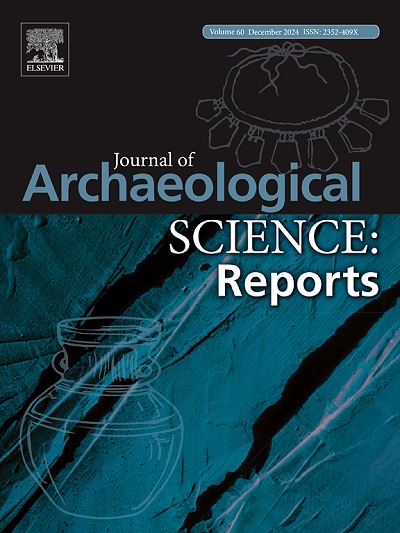重建18世纪克罗地亚Prozorje牧师的生活史:生物考古和生化方法
IF 1.5
2区 历史学
0 ARCHAEOLOGY
引用次数: 0
摘要
这项研究提出了一个成年男性个体的案例,可以追溯到现代早期,埋葬在克罗地亚Prozorje的圣马丁教堂。根据墓葬的特征,可以推测死者是神职人员。通过对该个体下颌第二恒磨牙(Man 2)的牙本质增量进行稳定的碳氮同位素分析,本研究旨在确定该个体在少年时期的饮食变化,以重建其进入神学院的时间。平均δ13C和δ15N值为C3和C4混合陆源饲粮,可见动物蛋白摄入量。增量牙质分析的结果提供了更详细的信息。确定断奶期可能结束的时间,随后开始以C4资源为基础的饮食,动物蛋白摄入量低,幼儿期有生理应激期。在观察期结束时,记录了显著的饮食变化,其特征是动物蛋白摄入量增加,C4资源消耗减少。根据历史资料,这与神职人员学员通常进入神学院的时间相对应,膳食团包括每天摄入肉类或鱼类菜肴以及各种水果和蔬菜(C3资源)。这是在欧洲这一地区进行的首次此类研究,它对我们了解近代早期克罗地亚的饮食习惯和某些社会习俗有重要贡献。本文章由计算机程序翻译,如有差异,请以英文原文为准。
Reconstructing life history of the 18th century priest from Prozorje, Croatia: Bioarchaeological and biochemical approaches
The study presents a case of the adult male individual dated to the Early Modern Period buried at the church of St. Martin at Prozorje in Croatia. Based on the burial characteristic, the individual is presumed to be a member of the clergy. Using stable carbon and nitrogen isotope analysis of the dentine increments from the second permanent mandibular molar (Man 2) of the individual, this study aims to identify dietary changes during the juvenile years of the individual in order to reconstruct the timing of his admission into the seminary. Mean δ13C and δ15N values indicate mixed C3 and C4 terrestrial based diet with the visible animal protein intake. Results of the incremental dentine analysis provide more detailed information. The possible end of the weaning period is identified, followed by the diet based on C4 resources with low animal protein intake with periods of physiological stress during his early childhood. By the end of the observed period, significant dietary change is recorded characterised by the high animal protein intake and consumption of less C4 resources. According to the historical resources, this corresponds with the timing clergy cadets usually entered the seminary with the dietary regiment consisting of daily intake of meat or fish dishes accompanied by variety of fruit and vegetables (C3 resources). This is the first such study conducted in this part of Europe and it significantly contributes to our knowledge of dietary practices and certain social customs in Early Modern Period Croatia.
求助全文
通过发布文献求助,成功后即可免费获取论文全文。
去求助
来源期刊

Journal of Archaeological Science-Reports
ARCHAEOLOGY-
CiteScore
3.10
自引率
12.50%
发文量
405
期刊介绍:
Journal of Archaeological Science: Reports is aimed at archaeologists and scientists engaged with the application of scientific techniques and methodologies to all areas of archaeology. The journal focuses on the results of the application of scientific methods to archaeological problems and debates. It will provide a forum for reviews and scientific debate of issues in scientific archaeology and their impact in the wider subject. Journal of Archaeological Science: Reports will publish papers of excellent archaeological science, with regional or wider interest. This will include case studies, reviews and short papers where an established scientific technique sheds light on archaeological questions and debates.
 求助内容:
求助内容: 应助结果提醒方式:
应助结果提醒方式:


